Friends, it’s true: the end of the decade approaches. It’s been a difficult, anxiety-provoking, morally compromised decade, but at least it’s been populated by some damn fine literature. We’ll take our silver linings where we can.
So, as is our hallowed duty as a literary and culture website—though with full awareness of the potentially fruitless and endlessly contestable nature of the task—in the coming weeks, we’ll be taking a look at the best and most important (these being not always the same) books of the decade that was. We will do this, of course, by means of a variety of lists. We began with the best debut novels, the best short story collections, the best poetry collections, and the best memoirs of the decade, and we have now reached the fifth list in our series: the best essay collections published in English between 2010 and 2019.
The following books were chosen after much debate (and several rounds of voting) by the Literary Hub staff. Tears were spilled, feelings were hurt, books were re-read. And as you’ll shortly see, we had a hard time choosing just ten—so we’ve also included a list of dissenting opinions, and an even longer list of also-rans. As ever, free to add any of your own favorites that we’ve missed in the comments below.
***
The Top Ten
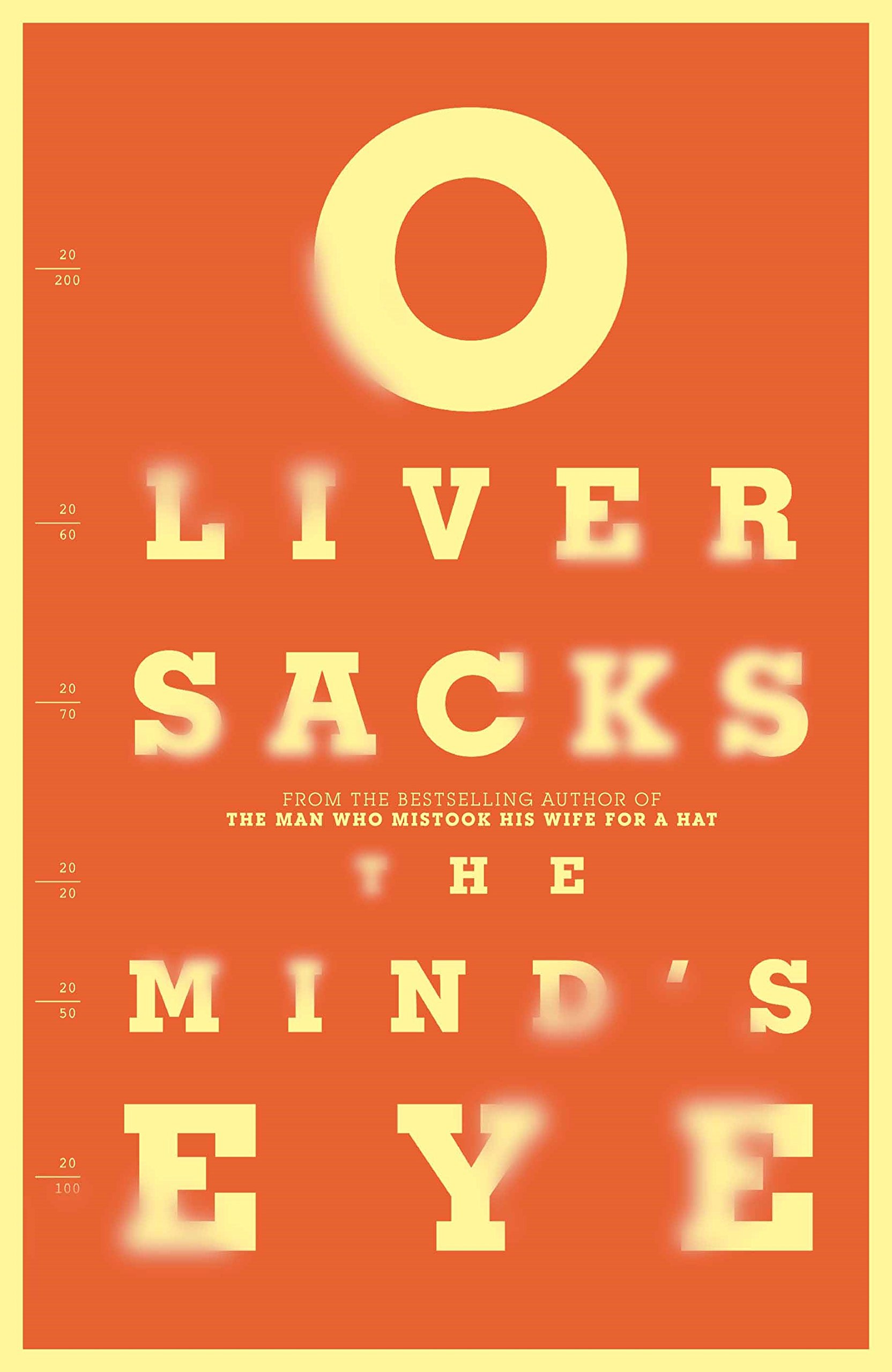 Oliver Sacks, The Mind’s Eye (2010)
Oliver Sacks, The Mind’s Eye (2010)
Toward the end of his life, maybe suspecting or sensing that it was coming to a close, Dr. Oliver Sacks tended to focus his efforts on sweeping intellectual projects like On the Move (a memoir), The River of Consciousness (a hybrid intellectual history), and Hallucinations (a book-length meditation on, what else, hallucinations). But in 2010, he gave us one more classic in the style that first made him famous, a form he revolutionized and brought into the contemporary literary canon: the medical case study as essay. In The Mind’s Eye, Sacks focuses on vision, expanding the notion to embrace not only how we see the world, but also how we map that world onto our brains when our eyes are closed and we’re communing with the deeper recesses of consciousness. Relaying histories of patients and public figures, as well as his own history of ocular cancer (the condition that would eventually spread and contribute to his death), Sacks uses vision as a lens through which to see all of what makes us human, what binds us together, and what keeps us painfully apart. The essays that make up this collection are quintessential Sacks: sensitive, searching, with an expertise that conveys scientific information and experimentation in terms we can not only comprehend, but which also expand how we see life carrying on around us. The case studies of “Stereo Sue,” of the concert pianist Lillian Kalir, and of Howard, the mystery novelist who can no longer read, are highlights of the collection, but each essay is a kind of gem, mined and polished by one of the great storytellers of our era. –Dwyer Murphy, CrimeReads Managing Editor
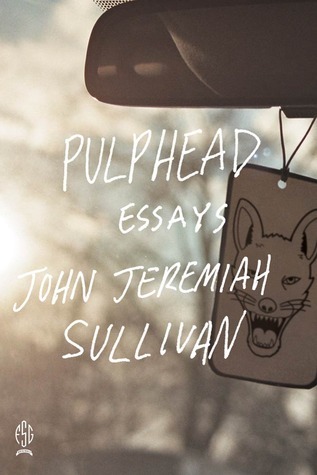 John Jeremiah Sullivan, Pulphead (2011)
John Jeremiah Sullivan, Pulphead (2011)
The American essay was having a moment at the beginning of the decade, and Pulphead was smack in the middle. Without any hard data, I can tell you that this collection of John Jeremiah Sullivan’s magazine features—published primarily in GQ, but also in The Paris Review, and Harper’s—was the only full book of essays most of my literary friends had read since Slouching Towards Bethlehem, and probably one of the only full books of essays they had even heard of.
Well, we all picked a good one. Every essay in Pulphead is brilliant and entertaining, and illuminates some small corner of the American experience—even if it’s just one house, with Sullivan and an aging writer inside (“Mr. Lytle” is in fact a standout in a collection with no filler; fittingly, it won a National Magazine Award and a Pushcart Prize). But what are they about? Oh, Axl Rose, Christian Rock festivals, living around the filming of One Tree Hill, the Tea Party movement, Michael Jackson, Bunny Wailer, the influence of animals, and by god, the Miz (of Real World/Road Rules Challenge fame).
But as Dan Kois has pointed out, what connects these essays, apart from their general tone and excellence, is “their author’s essential curiosity about the world, his eye for the perfect detail, and his great good humor in revealing both his subjects’ and his own foibles.” They are also extremely well written, drawing much from fictional techniques and sentence craft, their literary pleasures so acute and remarkable that James Wood began his review of the collection in The New Yorker with a quiz: “Are the following sentences the beginnings of essays or of short stories?” (It was not a hard quiz, considering the context.)
It’s hard not to feel, reading this collection, like someone reached into your brain, took out the half-baked stuff you talk about with your friends, researched it, lived it, and represented it to you smarter and better and more thoroughly than you ever could. So read it in awe if you must, but read it. –Emily Temple, Senior Editor
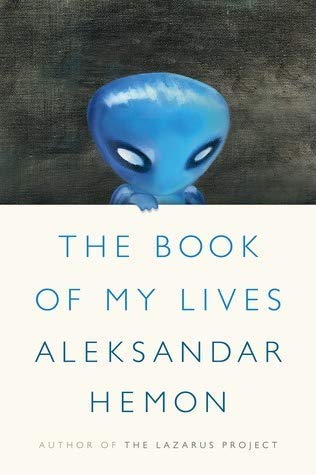 Aleksandar Hemon, The Book of My Lives (2013)
Aleksandar Hemon, The Book of My Lives (2013)
Such is the sentence-level virtuosity of Aleksandar Hemon—the Bosnian-American writer, essayist, and critic—that throughout his career he has frequently been compared to the granddaddy of borrowed language prose stylists: Vladimir Nabokov. While it is, of course, objectively remarkable that anyone could write so beautifully in a language they learned in their twenties, what I admire most about Hemon’s work is the way in which he infuses every essay and story and novel with both a deep humanity and a controlled (but never subdued) fury. He can also be damn funny. Hemon grew up in Sarajevo and left in 1992 to study in Chicago, where he almost immediately found himself stranded, forced to watch from afar as his beloved home city was subjected to a relentless four-year bombardment, the longest siege of a capital in the history of modern warfare. This extraordinary memoir-in-essays is many things: it’s a love letter to both the family that raised him and the family he built in exile; it’s a rich, joyous, and complex portrait of a place the 90s made synonymous with war and devastation; and it’s an elegy for the wrenching loss of precious things. There’s an essay about coming of age in Sarajevo and another about why he can’t bring himself to leave Chicago. There are stories about relationships forged and maintained on the soccer pitch or over the chessboard, and stories about neighbors and mentors turned monstrous by ethnic prejudice. As a chorus they sing with insight, wry humor, and unimaginable sorrow. I am not exaggerating when I say that the collection’s devastating final piece, “The Aquarium”—which details his infant daughter’s brain tumor and the agonizing months which led up to her death—remains the most painful essay I have ever read. –Dan Sheehan, Book Marks Editor
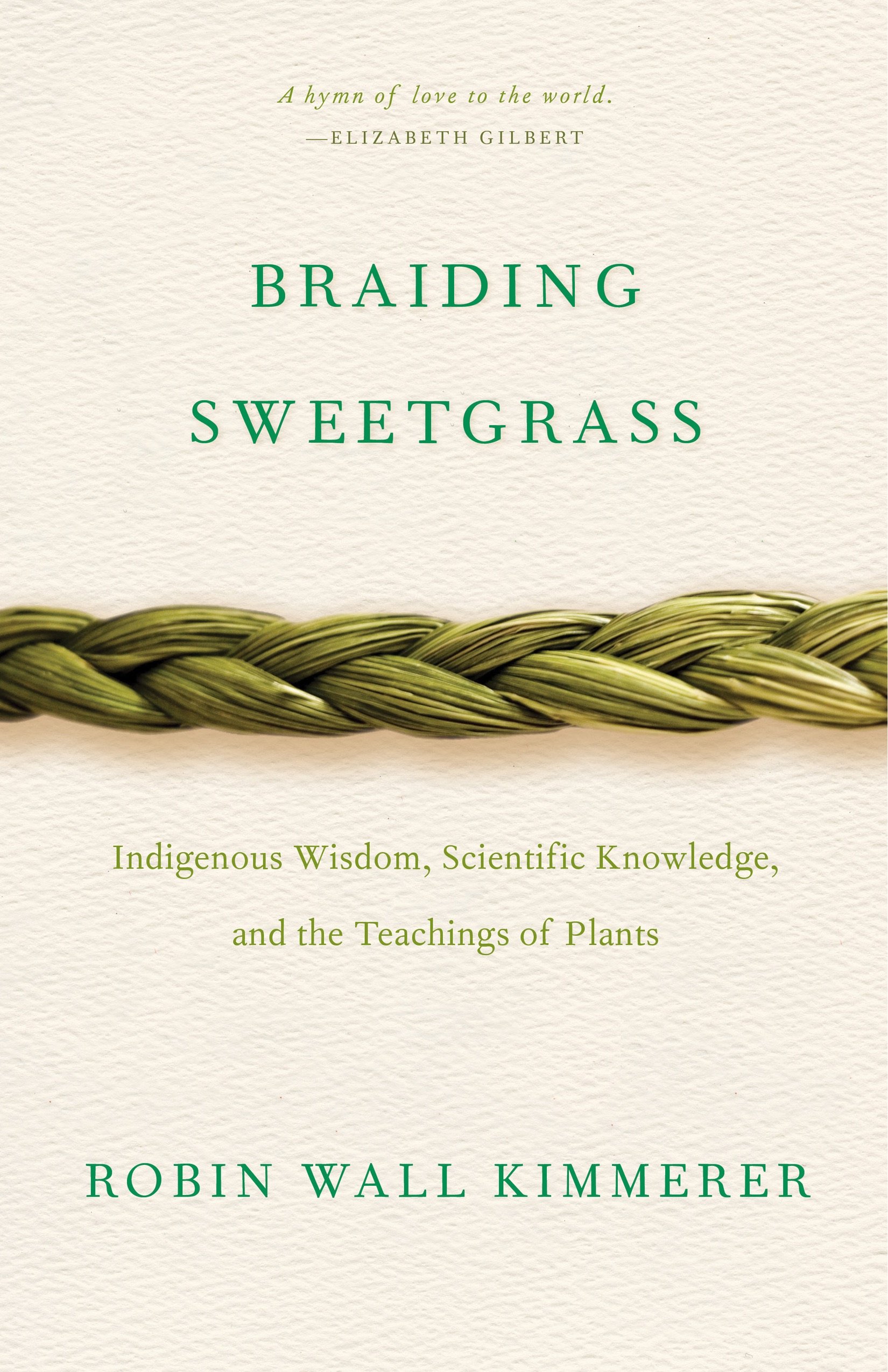 Robin Wall Kimmerer, Braiding Sweetgrass (2013)
Robin Wall Kimmerer, Braiding Sweetgrass (2013)
Of every essay in my relentlessly earmarked copy of Braiding Sweetgrass, Dr. Robin Wall Kimmerer’s gorgeously rendered argument for why and how we should keep going, there’s one that especially hits home: her account of professor-turned-forester Franz Dolp. When Dolp, several decades ago, revisited the farm that he had once shared with his ex-wife, he found a scene of destruction: The farm’s new owners had razed the land where he had tried to build a life. “I sat among the stumps and the swirling red dust and I cried,” he wrote in his journal.
So many in my generation (and younger) feel this kind of helplessness–and considerable rage–at finding ourselves newly adult in a world where those in power seem determined to abandon or destroy everything that human bodies have always needed to survive: air, water, land. Asking any single book to speak to this helplessness feels unfair, somehow; yet, Braiding Sweetgrass does, by weaving descriptions of indigenous tradition with the environmental sciences in order to show what survival has looked like over the course of many millennia. Kimmerer’s essays describe her personal experience as a Potawotami woman, plant ecologist, and teacher alongside stories of the many ways that humans have lived in relationship to other species. Whether describing Dolp’s work–he left the stumps for a life of forest restoration on the Oregon coast–or the work of others in maple sugar harvesting, creating black ash baskets, or planting a Three Sisters garden of corn, beans, and squash, she brings hope. “In ripe ears and swelling fruit, they counsel us that all gifts are multiplied in relationship,” she writes of the Three Sisters, which all sustain one another as they grow. “This is how the world keeps going.” –Corinne Segal, Senior Editor
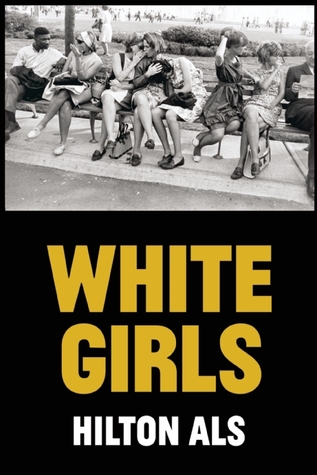 Hilton Als, White Girls (2013)
Hilton Als, White Girls (2013)
In a world where we are so often reduced to one essential self, Hilton Als’ breathtaking book of critical essays, White Girls, which meditates on the ways he and other subjects read, project and absorb parts of white femininity, is a radically liberating book. It’s one of the only works of critical thinking that doesn’t ask the reader, its author or anyone he writes about to stoop before the doorframe of complete legibility before entering. Something he also permitted the subjects and readers of his first book, the glorious book-length essay, The Women, a series of riffs and psychological portraits of Dorothy Dean, Owen Dodson, and the author’s own mother, among others. One of the shifts of that book, uncommon at the time, was how it acknowledges the way we inhabit bodies made up of variously gendered influences. To read White Girls now is to experience the utter freedom of this gift and to marvel at Als’ tremendous versatility and intelligence.
He is easily the most diversely talented American critic alive. He can write into genres like pop music and film where being part of an audience is a fantasy happening in the dark. He’s also wired enough to know how the art world builds reputations on the nod of rich white patrons, a significant collision in a time when Jean-Michel Basquiat is America’s most expensive modern artist. Als’ swerving and always moving grip on performance means he’s especially good on describing the effect of art which is volatile and unstable and built on the mingling of made-up concepts and the hard fact of their effect on behavior, such as race. Writing on Flannery O’Connor for instance he alone puts a finger on her “uneasy and unavoidable union between black and white, the sacred and the profane, the shit and the stars.” From Eminem to Richard Pryor, André Leon Talley to Michael Jackson, Als enters the life and work of numerous artists here who turn the fascinations of race and with whiteness into fury and song and describes the complexity of their beauty like his life depended upon it. There are also brief memoirs here that will stop your heart. This is an essential work to understanding American culture. –John Freeman, Executive Editor
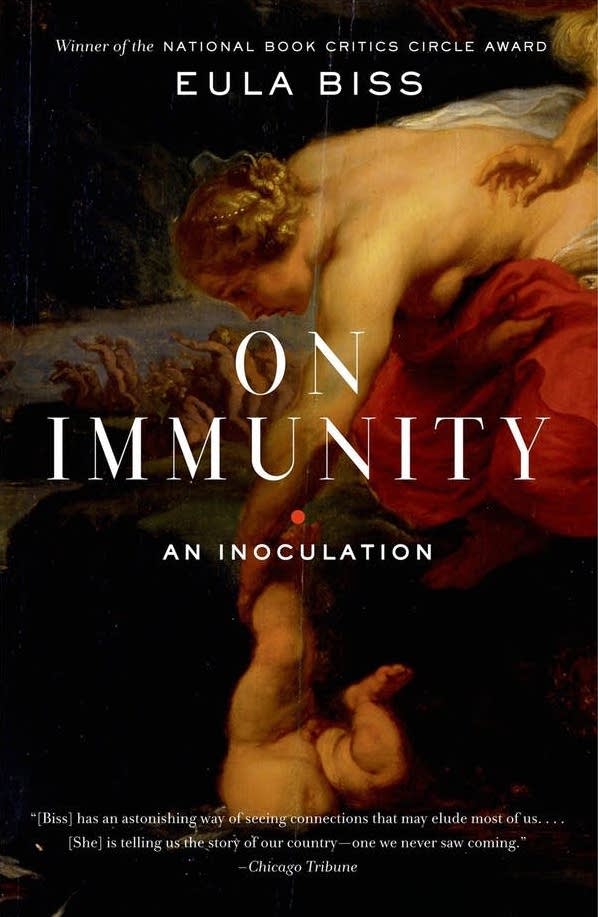 Eula Biss, On Immunity (2014)
Eula Biss, On Immunity (2014)
We move through the world as if we can protect ourselves from its myriad dangers, exercising what little agency we have in an effort to keep at bay those fears that gather at the edges of any given life: of loss, illness, disaster, death. It is these fears—amplified by the birth of her first child—that Eula Biss confronts in her essential 2014 essay collection, On Immunity. As any great essayist does, Biss moves outward in concentric circles from her own very private view of the world to reveal wider truths, discovering as she does a culture consumed by anxiety at the pervasive toxicity of contemporary life. As Biss interrogates this culture—of privilege, of whiteness—she interrogates herself, questioning the flimsy ways in which we arm ourselves with science or superstition against the impurities of daily existence.
Five years on from its publication, it is dismaying that On Immunity feels as urgent (and necessary) a defense of basic science as ever. Vaccination, we learn, is derived from vacca—for cow—after the 17th-century discovery that a small application of cowpox was often enough to inoculate against the scourge of smallpox, an etymological digression that belies modern conspiratorial fears of Big Pharma and its vaccination agenda. But Biss never scolds or belittles the fears of others, and in her generosity and openness pulls off a neat (and important) trick: insofar as we are of the very world we fear, she seems to be suggesting, we ourselves are impure, have always been so, permeable, vulnerable, yet so much stronger than we think. –Jonny Diamond, Editor-in-Chief
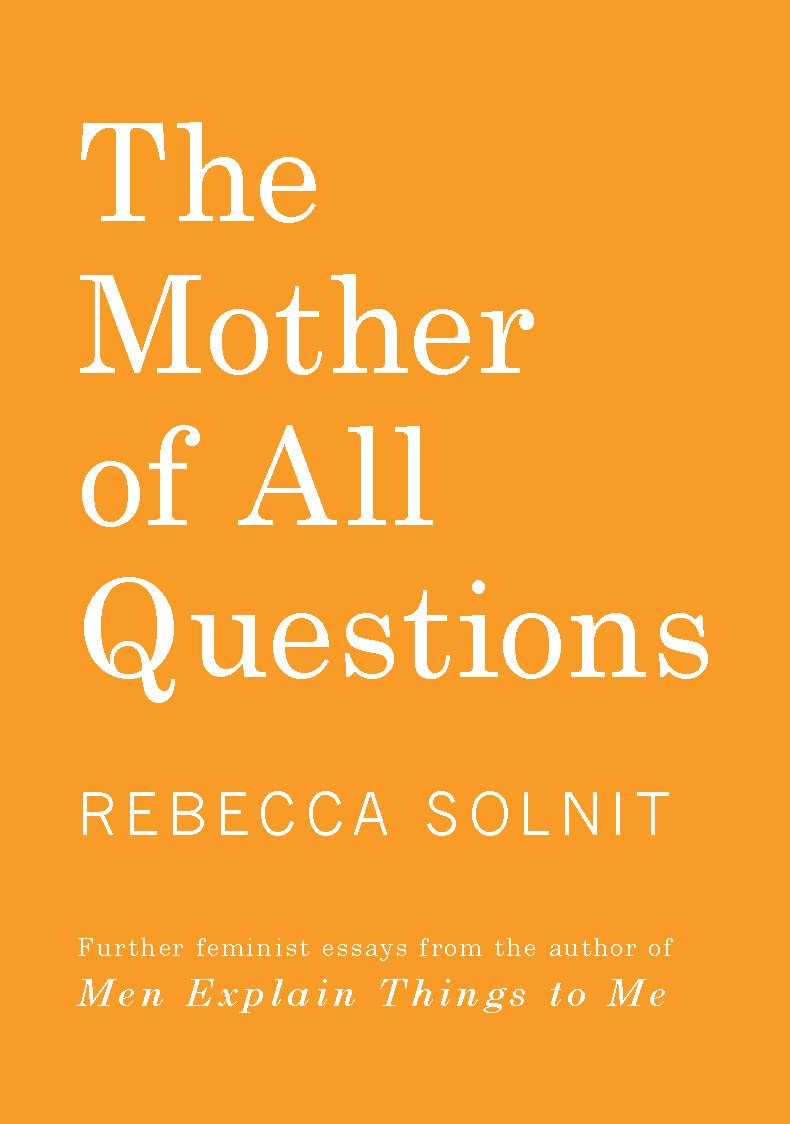 Rebecca Solnit, The Mother of All Questions (2016)
Rebecca Solnit, The Mother of All Questions (2016)
When Rebecca Solnit’s essay, “Men Explain Things to Me,” was published in 2008, it quickly became a cultural phenomenon unlike almost any other in recent memory, assigning language to a behavior that almost every woman has witnessed—mansplaining—and, in the course of identifying that behavior, spurring a movement, online and offline, to share the ways in which patriarchal arrogance has intersected all our lives. (It would also come to be the titular essay in her collection published in 2014.) The Mother of All Questions follows up on that work and takes it further in order to examine the nature of self-expression—who is afforded it and denied it, what institutions have been put in place to limit it, and what happens when it is employed by women. Solnit has a singular gift for describing and decoding the misogynistic dynamics that govern the world so universally that they can seem invisible and the gendered violence that is so common as to seem unremarkable; this naming is powerful, and it opens space for sharing the stories that shape our lives.
The Mother of All Questions, comprised of essays written between 2014 and 2016, in many ways armed us with some of the tools necessary to survive the gaslighting of the Trump years, in which many of us—and especially women—have continued to hear from those in power that the things we see and hear do not exist and never existed. Solnit also acknowledges that labels like “woman,” and other gendered labels, are identities that are fluid in reality; in reviewing the book for The New Yorker, Moira Donegan suggested that, “One useful working definition of a woman might be ‘someone who experiences misogyny.'” Whichever words we use, Solnit writes in the introduction to the book that “when words break through unspeakability, what was tolerated by a society sometimes becomes intolerable.” This storytelling work has always been vital; it continues to be vital, and in this book, it is brilliantly done. –Corinne Segal, Senior Editor
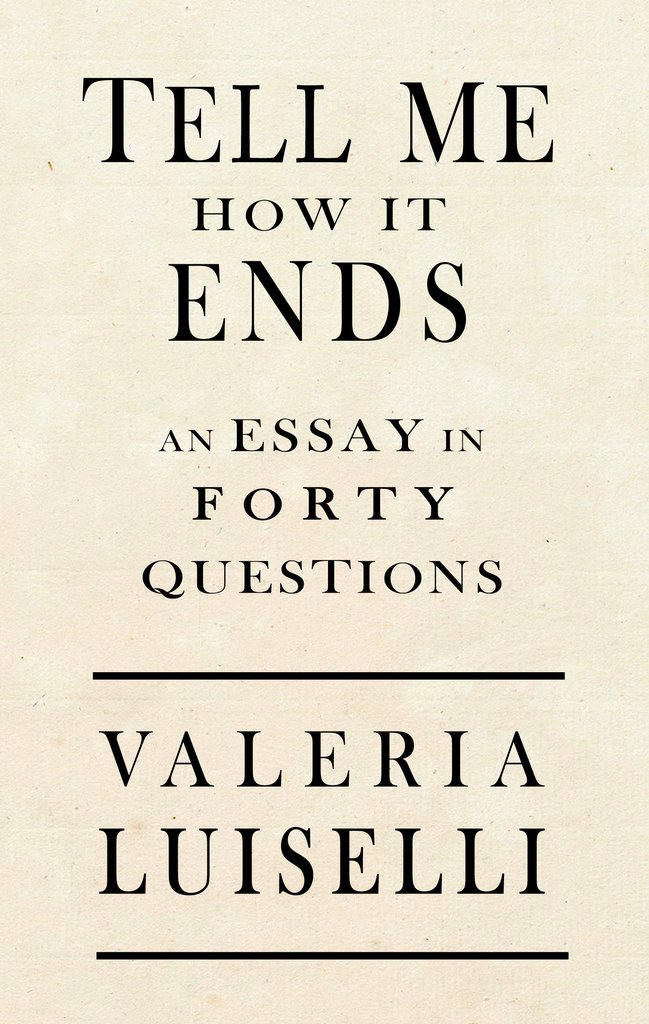 Valeria Luiselli, Tell Me How It Ends (2017)
Valeria Luiselli, Tell Me How It Ends (2017)
The newly minted MacArthur fellow Valeria Luiselli’s four-part (but really six-part) essay Tell Me How It Ends: An Essay in Forty Questions was inspired by her time spent volunteering at the federal immigration court in New York City, working as an interpreter for undocumented, unaccompanied migrant children who crossed the U.S.-Mexico border. Written concurrently with her novel Lost Children Archive (a fictional exploration of the same topic), Luiselli’s essay offers a fascinating conceit, the fashioning of an argument from the questions on the government intake form given to these children to process their arrivals. (Aside from the fact that this essay is a heartbreaking masterpiece, this is such a good conceit—transforming a cold, reproducible administrative document into highly personal literature.) Luiselli interweaves a grounded discussion of the questionnaire with a narrative of the road trip Luiselli takes with her husband and family, across America, while they (both Mexican citizens) wait for their own Green Card applications to be processed. It is on this trip when Luiselli reflects on the thousands of migrant children mysteriously traveling across the border by themselves. But the real point of the essay is to actually delve into the real stories of some of these children, which are agonizing, as well as to gravely, clearly expose what literally happens, procedural, when they do arrive—from forms to courts, as they’re swallowed by a bureaucratic vortex. Amid all of this, Luiselli also takes on more, exploring the larger contextual relationship between the United States of America and Mexico (as well as other countries in Central America, more broadly) as it has evolved to our current, adverse moment. Tell Me How It Ends is so small, but it is so passionate and vigorous: it desperately accomplishes in its less-than-100-pages-of-prose what centuries and miles and endless records of federal bureaucracy have never been able, and have never cared, to do: reverse the dehumanization of Latin American immigrants that occurs once they set foot in this country. –Olivia Rutigliano, CrimeReads Editorial Fellow
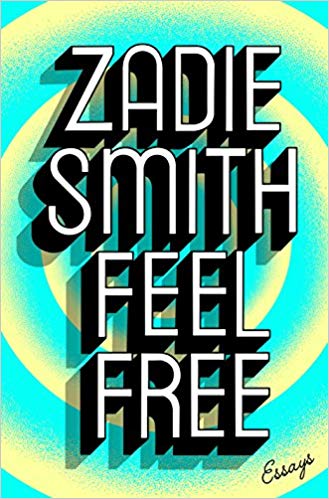 Zadie Smith, Feel Free (2018)
Zadie Smith, Feel Free (2018)
In the essay “Meet Justin Bieber!” in Feel Free, Zadie Smith writes that her interest in Justin Bieber is not an interest in the interiority of the singer himself, but in “the idea of the love object”. This essay—in which Smith imagines a meeting between Bieber and the late philosopher Martin Buber (“Bieber and Buber are alternative spellings of the same German surname,” she explains in one of many winning footnotes. “Who am I to ignore these hints from the universe?”). Smith allows that this premise is a bit premise-y: “I know, I know.” Still, the resulting essay is a very funny, very smart, and un-tricky exploration of individuality and true “meeting,” with a dash of late capitalism thrown in for good measure. The melding of high and low culture is the bread and butter of pretty much every prestige publication on the internet these days (and certainly of the Twitter feeds of all “public intellectuals”), but the essays in Smith’s collection don’t feel familiar—perhaps because hers is, as we’ve long known, an uncommon skill. Though I believe Smith could probably write compellingly about anything, she chooses her subjects wisely. She writes with as much electricity about Brexit as the aforementioned Beliebers—and each essay is utterly engrossing. “She contains multitudes, but her point is we all do,” writes Hermione Hoby in her review of the collection in The New Republic. “At the same time, we are, in our endless difference, nobody but ourselves.” –Jessie Gaynor, Social Media Editor
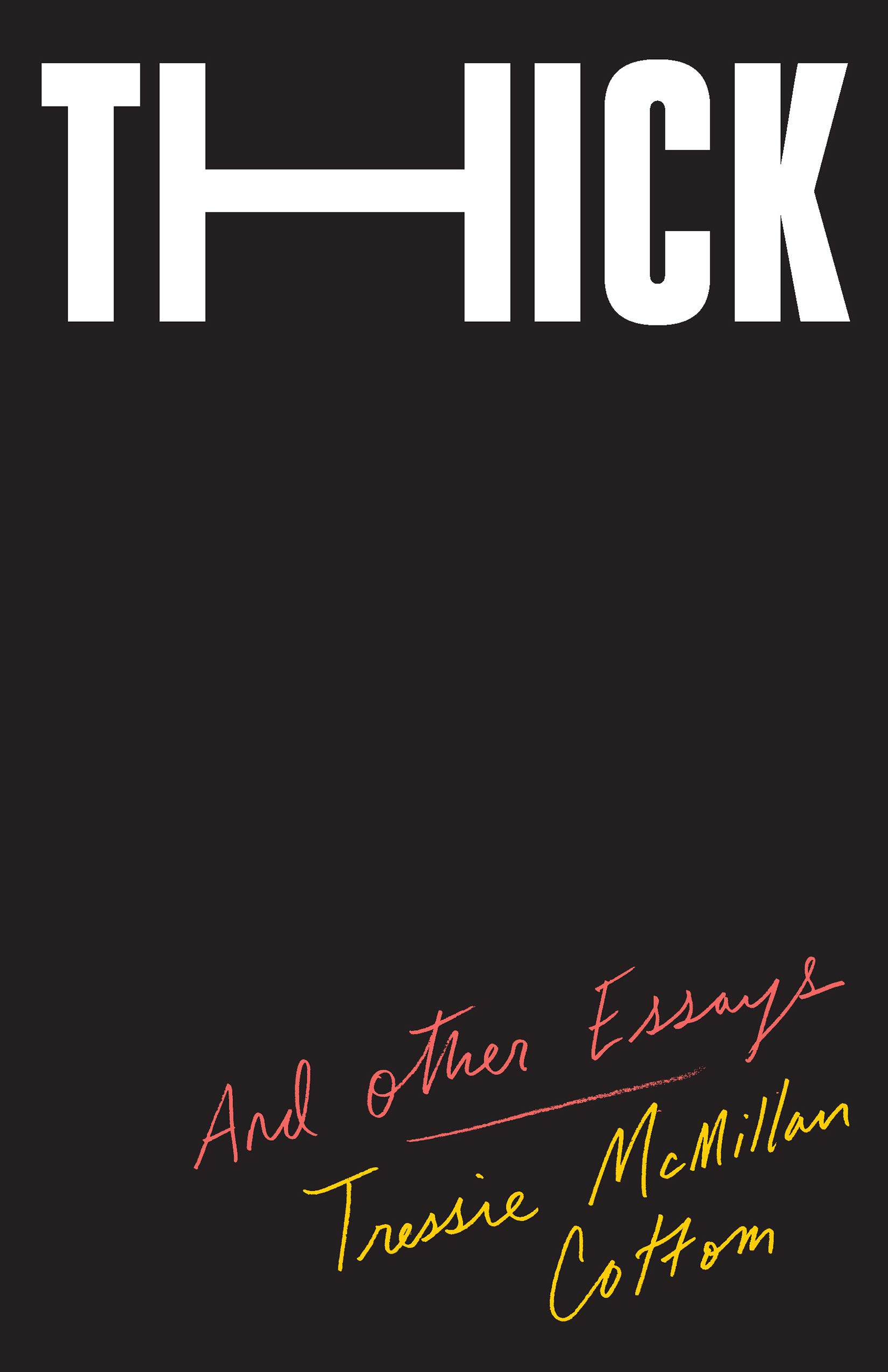 Tressie McMillan Cottom, Thick: And Other Essays (2019)
Tressie McMillan Cottom, Thick: And Other Essays (2019)
Tressie McMillan Cottom is an academic who has transcended the ivory tower to become the sort of public intellectual who can easily appear on radio or television talk shows to discuss race, gender, and capitalism. Her collection of essays reflects this duality, blending scholarly work with memoir to create a collection on the black female experience in postmodern America that’s “intersectional analysis with a side of pop culture.” The essays range from an analysis of sexual violence, to populist politics, to social media, but in centering her own experiences throughout, the collection becomes something unlike other pieces of criticism of contemporary culture. In explaining the title, she reflects on what an editor had said about her work: “I was too readable to be academic, too deep to be popular, too country black to be literary, and too naïve to show the rigor of my thinking in the complexity of my prose. I had wanted to create something meaningful that sounded not only like me, but like all of me. It was too thick.” One of the most powerful essays in the book is “Dying to be Competent” which begins with her unpacking the idiocy of LinkedIn (and the myth of meritocracy) and ends with a description of her miscarriage, the mishandling of black woman’s pain, and a condemnation of healthcare bureaucracy. A finalist for the 2019 National Book Award for Nonfiction, Thick confirms McMillan Cottom as one of our most fearless public intellectuals and one of the most vital. –Emily Firetog, Deputy Editor
***
Dissenting Opinions
The following books were just barely nudged out of the top ten, but we (or at least one of us) couldn’t let them pass without comment.
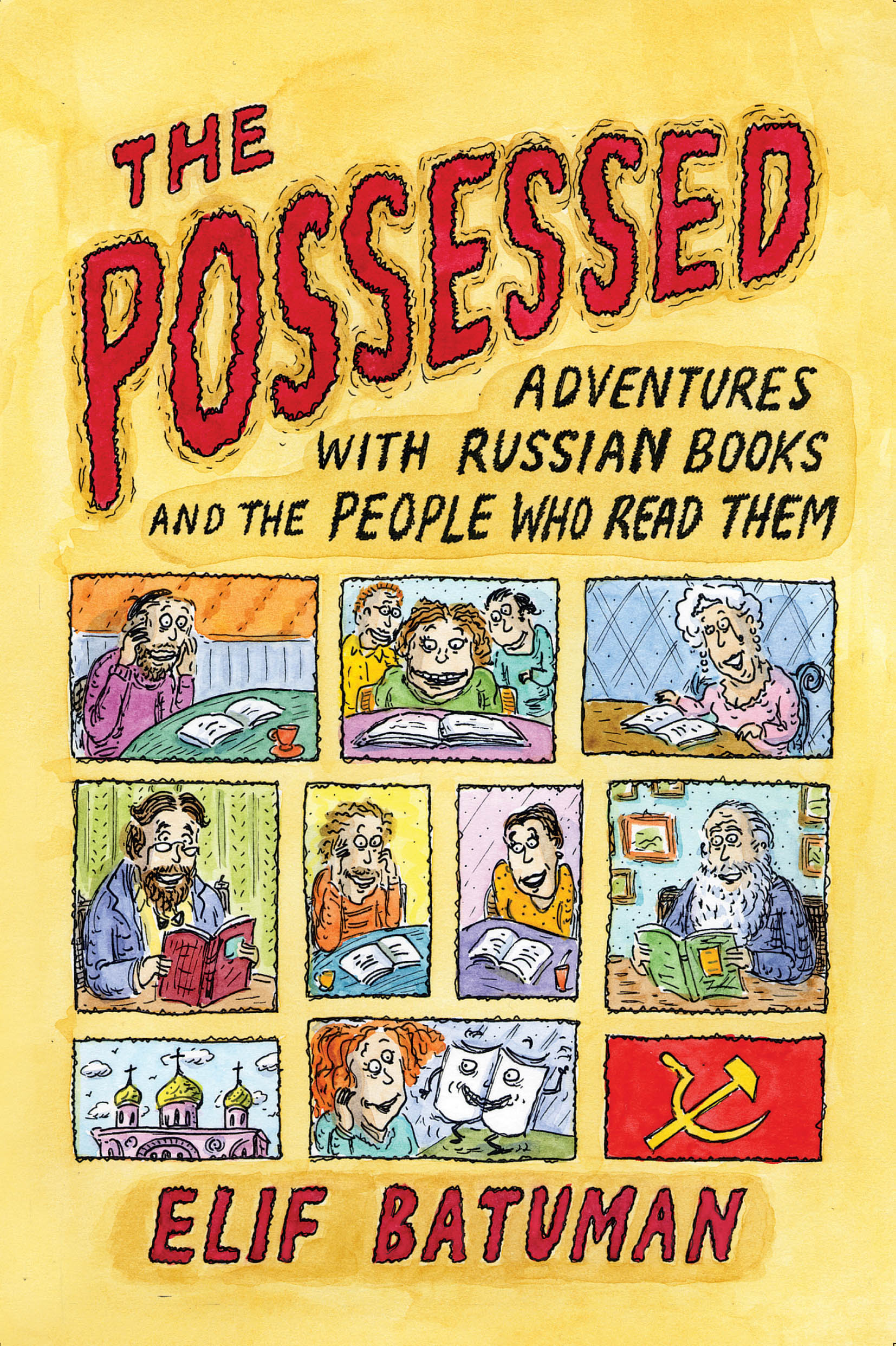 Elif Batuman, The Possessed (2010)
Elif Batuman, The Possessed (2010)
In The Possessed Elif Batuman indulges her love of Russian literature and the result is hilarious and remarkable. Each essay of the collection chronicles some adventure or other that she had while in graduate school for Comparative Literature and each is more unpredictable than the next. There’s the time a “well-known 20th-centuryist” gave a graduate student the finger; and the time when Batuman ended up living in Samarkand, Uzbekistan, for a summer; and the time that she convinced herself Tolstoy was murdered and spent the length of the Tolstoy Conference in Yasnaya Polyana considering clues and motives. Rich in historic detail about Russian authors and literature and thoughtfully constructed, each essay is an amalgam of critical analysis, cultural criticism, and serious contemplation of big ideas like that of identity, intellectual legacy, and authorship. With wit and a serpentine-like shape to her narratives, Batuman adopts a form reminiscent of a Socratic discourse, setting up questions at the beginning of her essays and then following digressions that more or less entreat the reader to synthesize the answer for herself. The digressions are always amusing and arguably the backbone of the collection, relaying absurd anecdotes with foreign scholars or awkward, surreal encounters with Eastern European strangers. Central also to the collection are Batuman’s intellectual asides where she entertains a theory—like the “problem of the person”: the inability to ever wholly capture one’s character—that ultimately layer the book’s themes. “You are certainly my most entertaining student,” a professor said to Batuman. But she is also curious and enthusiastic and reflective and so knowledgeable that she might even convince you (she has me!) that you too love Russian literature as much as she does. –Eleni Theodoropoulos, Editorial Fellow
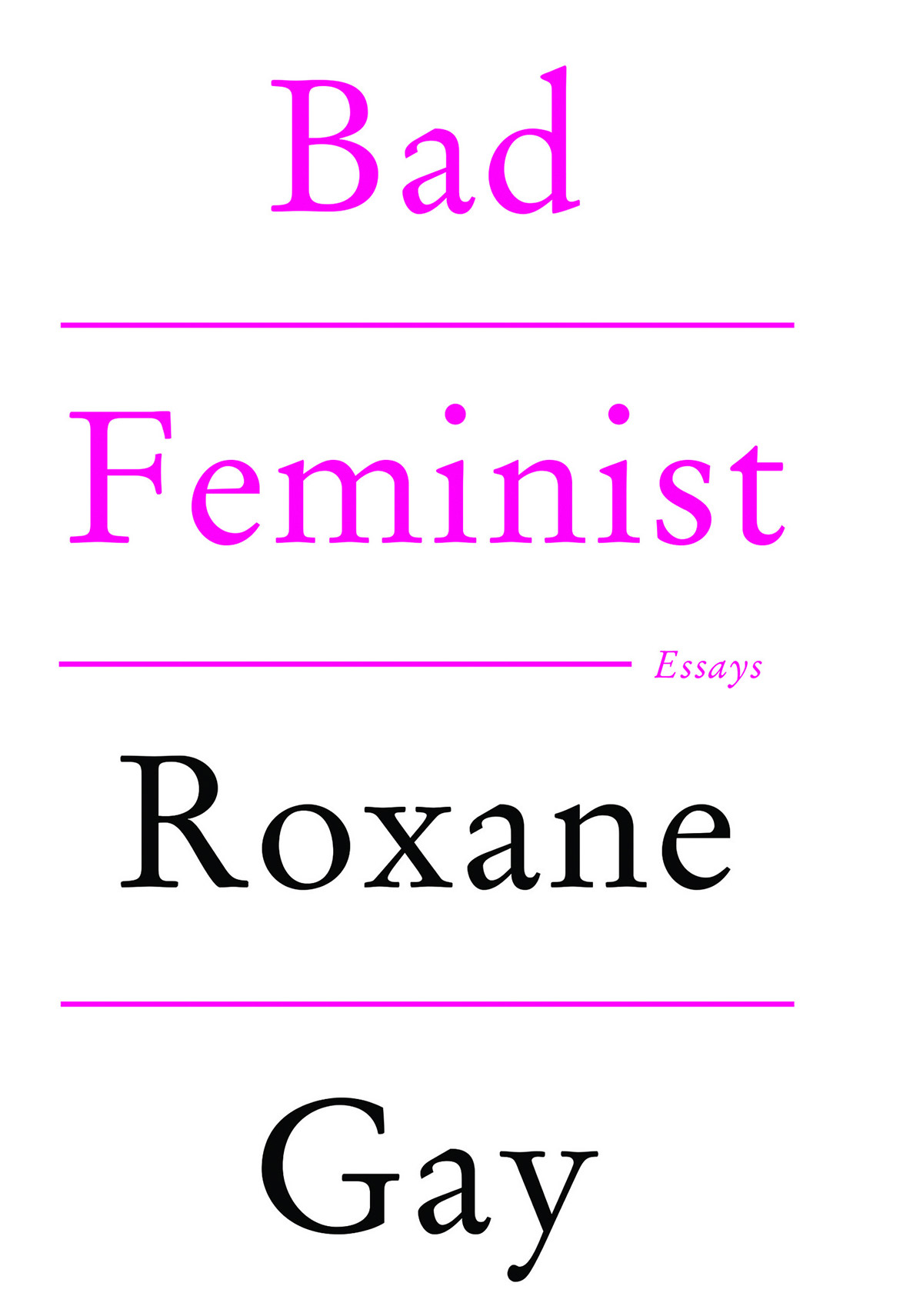 Roxane Gay, Bad Feminist (2014)
Roxane Gay, Bad Feminist (2014)
Roxane Gay’s now-classic essay collection is a book that will make you laugh, think, cry, and then wonder, how can cultural criticism be this fun? My favorite essays in the book include Gay’s musings on competitive Scrabble, her stranded-in-academia dispatches, and her joyous film and television criticism, but given the breadth of topics Roxane Gay can discuss in an entertaining manner, there’s something for everyone in this one. This book is accessible because feminism itself should be accessible – Roxane Gay is as likely to draw inspiration from YA novels, or middle-brow shows about friendship, as she is to introduce concepts from the academic world, and if there’s anyone I trust to bridge the gap between high culture, low culture, and pop culture, it’s the Goddess of Twitter. I used to host a book club dedicated to radical reads, and this was one of the first picks for the club; a week after the book club met, I spied a few of the attendees meeting in the café of the bookstore, and found out that they had bonded so much over discussing Bad Feminist that they couldn’t wait for the next meeting of the book club to keep discussing politics and intersectionality, and that, in a nutshell, is the power of Roxane. –Molly Odintz, CrimeReads Associate Editor
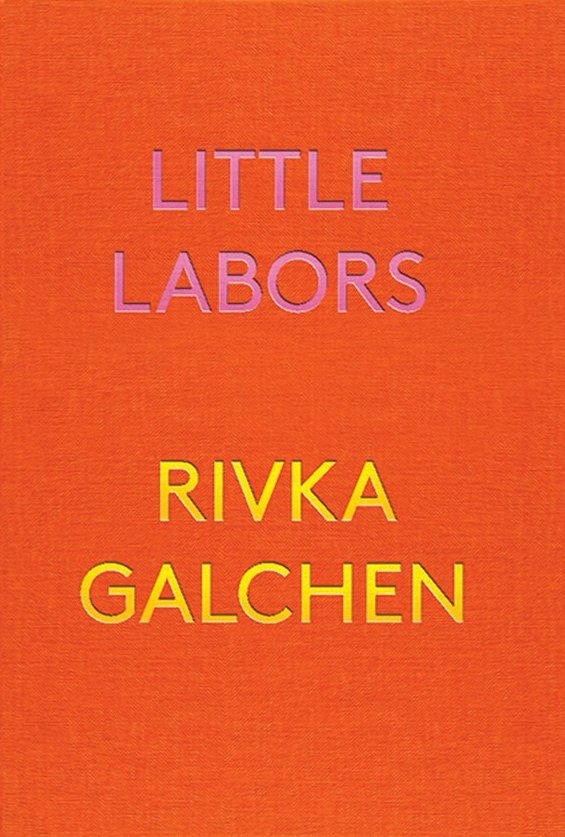 Rivka Galchen, Little Labors (2016)
Rivka Galchen, Little Labors (2016)
Generally, I find stories about the trials and tribulations of child-having to be of limited appeal—useful, maybe, insofar as they offer validation that other people have also endured the bizarre realities of living with a tiny human, but otherwise liable to drift into the musings of parents thrilled at the simple fact of their own fecundity, as if they were the first ones to figure the process out (or not). But Little Labors is not simply an essay collection about motherhood, perhaps because Galchen initially “didn’t want to write about” her new baby—mostly, she writes, “because I had never been interested in babies, or mothers; in fact, those subjects had seemed perfectly not interesting to me.” Like many new mothers, though, Galchen soon discovered her baby—which she refers to sometimes as “the puma”—to be a preoccupying thought, demanding to be written about. Galchen’s interest isn’t just in her own progeny, but in babies in literature (“Literature has more dogs than babies, and also more abortions”), The Pillow Book, the eleventh-century collection of musings by Sei Shōnagon, and writers who are mothers. There are sections that made me laugh out loud, like when Galchen continually finds herself in an elevator with a neighbor who never fails to remark on the puma’s size. There are also deeper, darker musings, like the realization that the baby means “that it’s not permissible to die. There are days when this does not feel good.” It is a slim collection that I happened to read at the perfect time, and it remains one of my favorites of the decade. –Emily Firetog, Deputy Editor
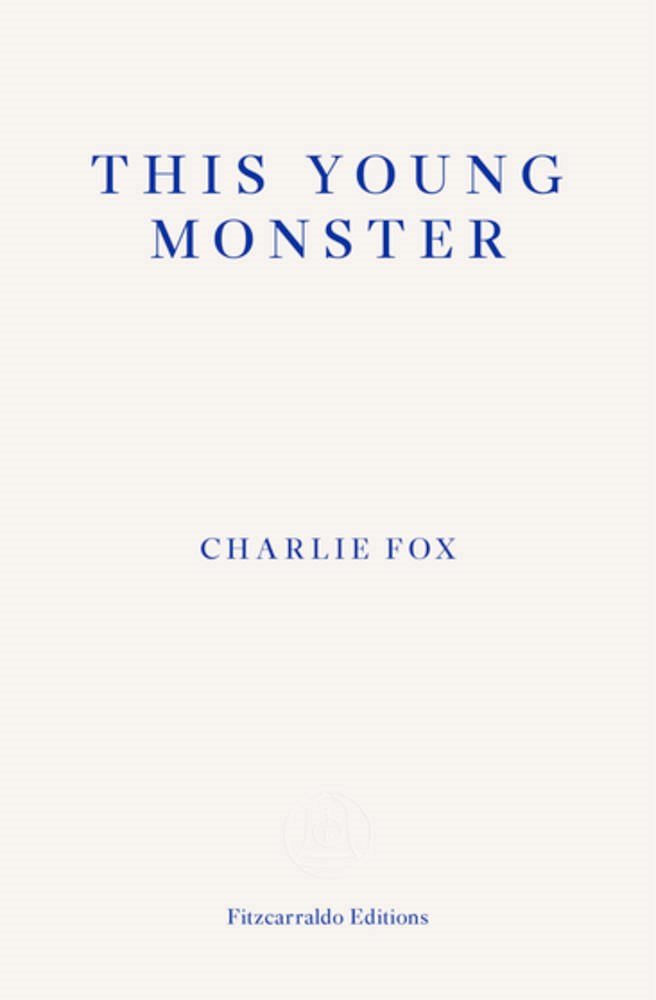 Charlie Fox, This Young Monster (2017)
Charlie Fox, This Young Monster (2017)
On social media as in his writing, British art critic Charlie Fox rejects lucidity for allusion and doesn’t quite answer the Twitter textbox’s persistent question: “What’s happening?” These days, it’s hard to tell. This Young Monster (2017), Fox’s first book,was published a few months after Donald Trump’s election, and at one point Fox takes a swipe at a man he judges “direct from a nightmare and just a repulsive fucking goon.” Fox doesn’t linger on politics, though, since most of the monsters he looks at “embody otherness and make it into art, ripping any conventional idea of beauty to shreds and replacing it with something weird and troubling of their own invention.”
If clichés are loathed because they conform to what philosopher Georges Bataille called “the common measure,” then monsters are rebellious non-sequiturs, comedic or horrific derailments from a classical ideal. Perverts in the most literal sense, monsters have gone astray from some “proper” course. The book’s nine chapters, which are about a specific monster or type of monster, are full of callbacks to familiar and lesser-known media. Fox cites visual art, film, songs, and books with the screwy buoyancy of a savant. Take one of his essays, “Spook House,” framed as a stage play with two principal characters, Klaus (“an intoxicated young skinhead vampire”) and Hermione (“a teen sorceress with green skin and jet-black hair” who looks more like The Wicked Witch than her namesake). The chorus is a troupe of trick-or-treaters. Using the filmmaker Cameron Jamie as a starting point, the rest is free association on gothic decadence and Detroit and L.A. as cities of the dead. All the while, Klaus quotes from Artforum, Dazed & Confused, and Time Out.It’s a technical feat that makes fictionalized dialogue a conveyor belt for cultural criticism.
In Fox’s imagination, David Bowie and the Hydra coexist alongside Peter Pan, Dennis Hopper, and the maenads. Fox’s book reaches for the monster’s mask, not really to peel it off but to feel and smell the rubber schnoz, to know how it’s made before making sure it’s still snugly set. With a stylistic blend of arthouse suavity and B-movie chic, This Young Monster considers how monsters in culture are made. Aren’t the scariest things made in post-production? Isn’t the creature just duplicity, like a looping choir or a dubbed scream? –Aaron Robertson, Assistant Editor
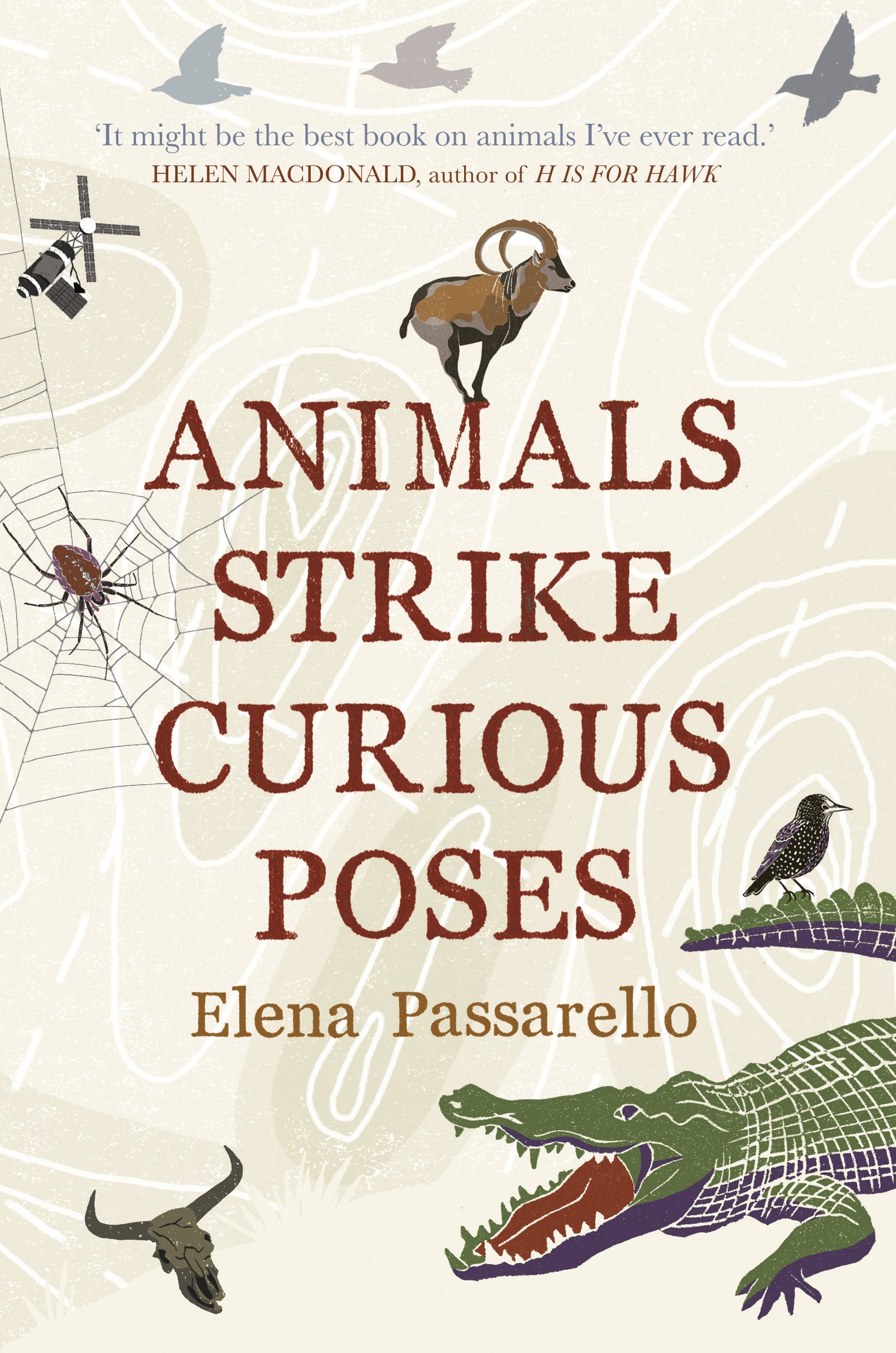 Elena Passarello, Animals Strike Curious Poses (2017)
Elena Passarello, Animals Strike Curious Poses (2017)
Elena Passarello’s collection of essays Animals Strike Curious Poses picks out infamous animals and grants them the voice, narrative, and history they deserve. Not only is a collection like this relevant during the sixth extinction but it is an ambitious historical and anthropological undertaking, which Passarello has tackled with thorough research and a playful tone that rather than compromise her subject, complicates and humanizes it. Passarello’s intention is to investigate the role of animals across the span of human civilization and in doing so, to construct a timeline of humanity as told through people’s interactions with said animals. “Of all the images that make our world, animal images are particularly buried inside us,” Passarello writes in her first essay, to introduce us to the object of the book and also to the oldest of her chosen characters: Yuka, a 39,000-year-old mummified woolly mammoth discovered in the Siberian permafrost in 2010. It was an occasion so remarkable and so unfathomable given the span of human civilization that Passarello says of Yuka: “Since language is epically younger than both thought and experience, ‘woolly mammoth’ means, to a human brain, something more like time.” The essay ends with a character placing a hand on a cave drawing of a woolly mammoth, accompanied by a phrase which encapsulates the author’s vision for the book: “And he becomes the mammoth so he can envision the mammoth.” In Passarello’s hands the imagined boundaries between the animal, natural, and human world disintegrate and what emerges is a cohesive if baffling integrated history of life. With the accuracy and tenacity of a journalist and the spirit of a storyteller, Elena Passarello has assembled a modern bestiary worthy of contemplation and awe. –Eleni Theodoropoulos, Editorial Fellow
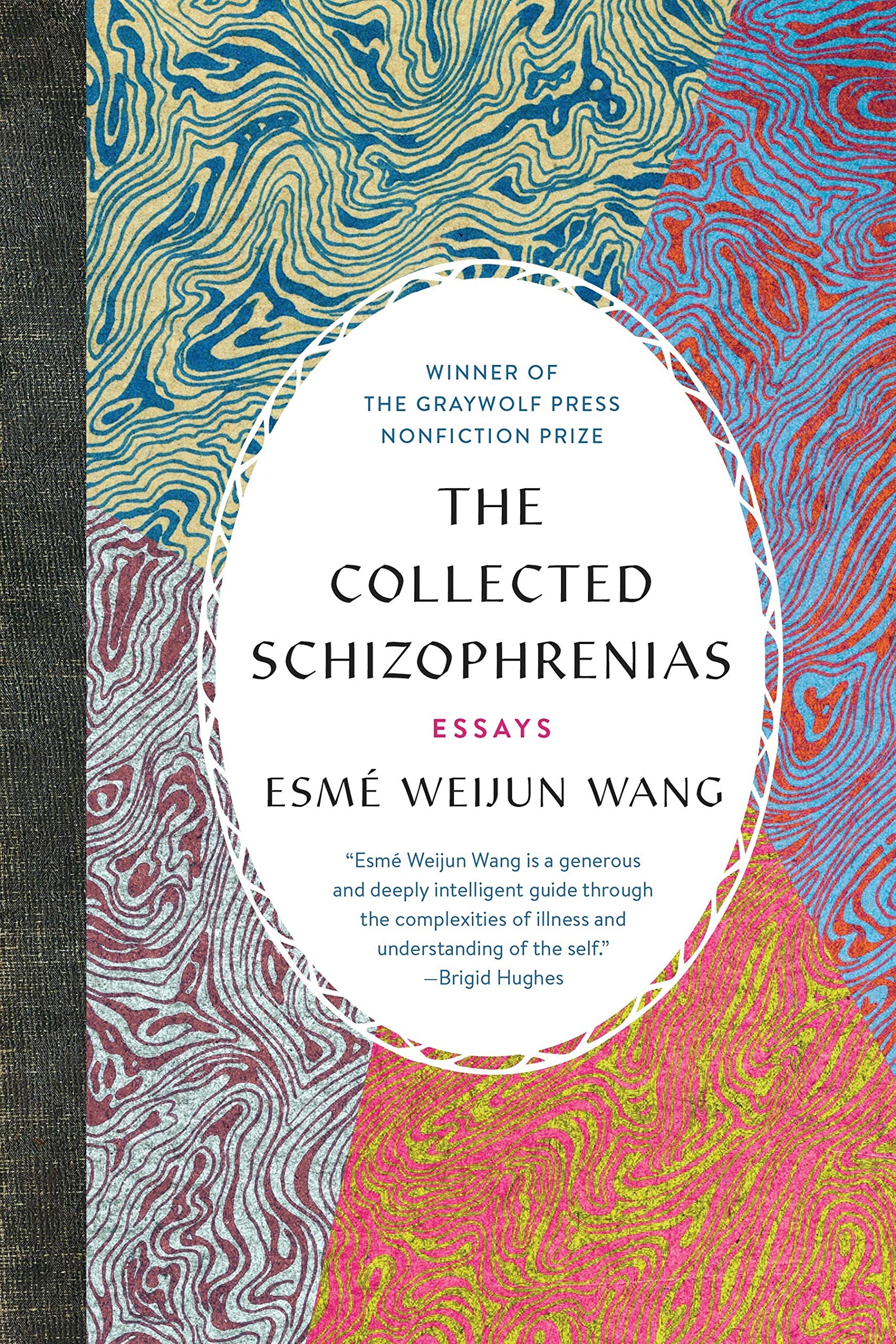 Esmé Weijun Wang, The Collected Schizophrenias (2019)
Esmé Weijun Wang, The Collected Schizophrenias (2019)
Esmé Weijun Wang’s collection of essays is a kaleidoscopic look at mental health and the lives affected by the schizophrenias. Each essay takes on a different aspect of the topic, but you’ll want to read them together for a holistic perspective. Esmé Weijun Wang generously begins The Collected Schizophrenias by acknowledging the stereotype, “Schizophrenia terrifies. It is the archetypal disorder of lunacy.” From there, she walks us through the technical language, breaks down the Diagnostic and Statistical Manual (DSM-5)’s clinical definition. And then she gets very personal, telling us about how she came to her own diagnosis and the way it’s touched her daily life (her relationships, her ideas about motherhood). Esmé Weijun Wang is uniquely situated to write about this topic. As a former lab researcher at Stanford, she turns a precise, analytical eye to her experience while simultaneously unfolding everything with great patience for her reader. Throughout, she brilliantly dissects the language around mental health. (On saying “a person living with bipolar disorder” instead of using “bipolar” as the sole subject: “…we are not our diseases. We are instead individuals with disorders and malfunctions. Our conditions lie over us like smallpox blankets; we are one thing and the illness is another.”) She pinpoints the ways she arms herself against anticipated reactions to the schizophrenias: high fashion, having attended an Ivy League institution. In a particularly piercing essay, she traces mental illness back through her family tree. She also places her story within more mainstream cultural contexts, calling on groundbreaking exposés about the dangerous of institutionalization and depictions of mental illness in television and film (like the infamous Slender Man case, in which two young girls stab their best friend because an invented Internet figure told them to). At once intimate and far-reaching, The Collected Schizophrenias is an informative and important (and let’s not forget artful) work. I’ve never read a collection quite so beautifully-written and laid-bare as this. –Katie Yee, Book Marks Assistant Editor
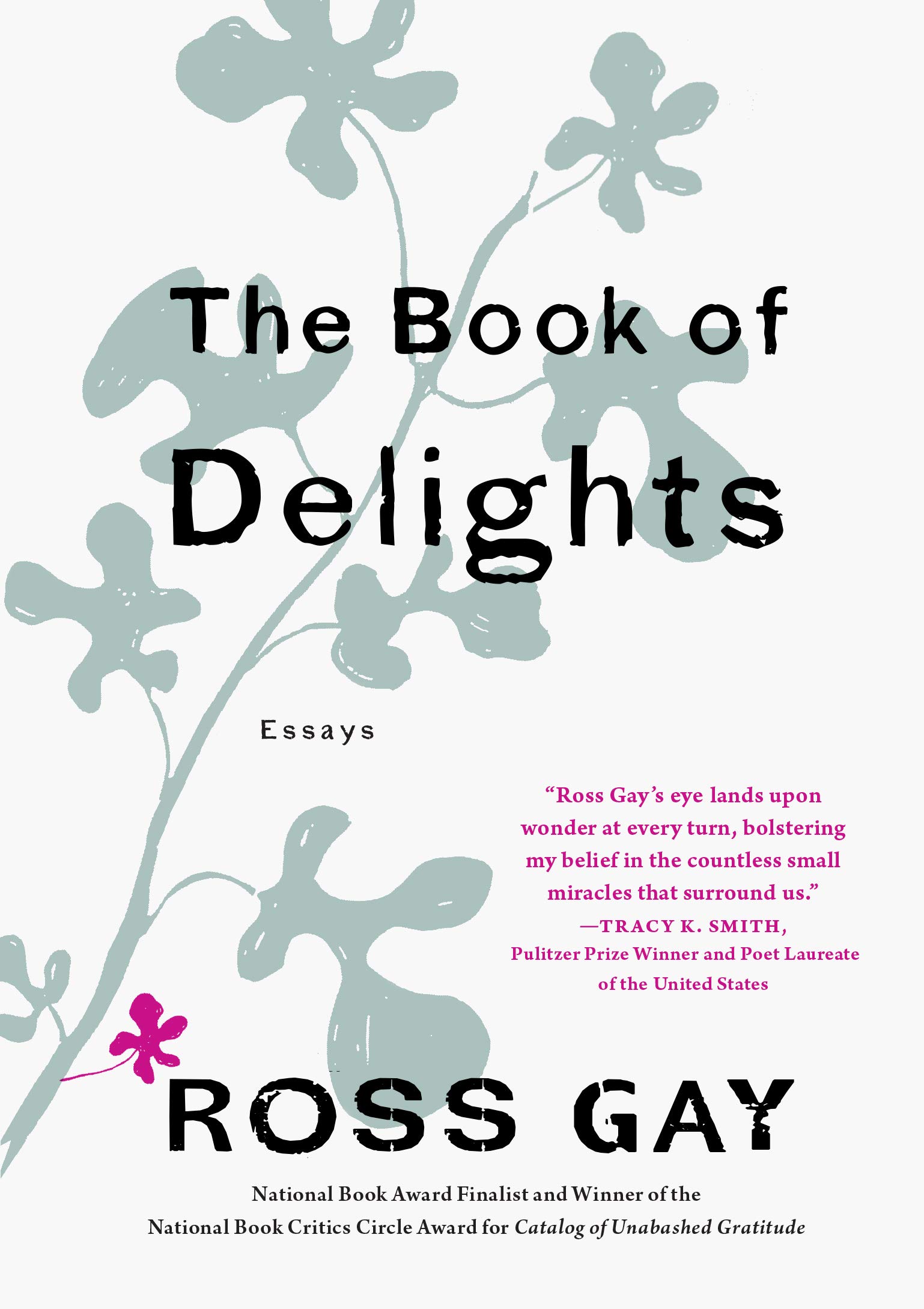 Ross Gay, The Book of Delights (2019)
Ross Gay, The Book of Delights (2019)
When Ross Gay began writing what would become The Book of Delights, he envisioned it as a project of daily essays, each focused on a moment or point of delight in his day. This plan quickly disintegrated; on day four, he skipped his self-imposed assignment and decided to “in honor and love, delight in blowing it off.” (Clearly, “blowing it off” is a relative term here, as he still produced the book.) Ross Gay is a generous teacher of how to live, and this moment of reveling in self-compassion is one lesson among many in The Book of Delights, which wanders from moments of connection with strangers to a shade of “red I don’t think I actually have words for,” a text from a friend reading “I love you breadfruit,” and “the sun like a guiding hand on my back, saying everything is possible. Everything.”
Gay does not linger on any one subject for long, creating the sense that delight is a product not of extenuating circumstances, but of our attention; his attunement to the possibilities of a single day, and awareness of all the small moments that produce delight, are a model for life amid the warring factions of the attention economy. These small moments range from the physical–hugging a stranger, transplanting fig cuttings–to the spiritual and philosophical, giving the impression of sitting beside Gay in his garden as he thinks out loud in real time. It’s a privilege to listen. –Corinne Segal, Senior Editor
***
Honorable Mentions
A selection of other books that we seriously considered for both lists—just to be extra about it (and because decisions are hard).
Terry Castle, The Professor and Other Writings (2010) · Joyce Carol Oates, In Rough Country (2010) · Geoff Dyer, Otherwise Known as the Human Condition (2011) · Christopher Hitchens, Arguably (2011) · Roberto Bolaño, tr. Natasha Wimmer, Between Parentheses (2011) · Dubravka Ugresic, tr. David Williams, Karaoke Culture (2011) · Tom Bissell, Magic Hours (2012) · Kevin Young, The Grey Album (2012) · William H. Gass, Life Sentences: Literary Judgments and Accounts (2012) · Mary Ruefle, Madness, Rack, and Honey (2012) · Herta Müller, tr. Geoffrey Mulligan, Cristina and Her Double (2013) · Leslie Jamison, The Empathy Exams (2014) · Meghan Daum, The Unspeakable (2014) · Daphne Merkin, The Fame Lunches (2014) · Charles D’Ambrosio, Loitering (2015) · Wendy Walters, Multiply/Divide (2015) · Colm Tóibín, On Elizabeth Bishop (2015) · Renee Gladman, Calamities (2016) · Jesmyn Ward, ed. The Fire This Time (2016) · Lindy West, Shrill (2016) · Mary Oliver, Upstream (2016) · Emily Witt, Future Sex (2016) · Olivia Laing, The Lonely City (2016) · Mark Greif, Against Everything (2016) · Durga Chew-Bose, Too Much and Not the Mood (2017) · Sarah Gerard, Sunshine State (2017) · Jim Harrison, A Really Big Lunch (2017) · J.M. Coetzee, Late Essays: 2006-2017 (2017) · Melissa Febos, Abandon Me (2017) · Louise Glück, American Originality (2017) · Joan Didion, South and West (2017) · Tom McCarthy, Typewriters, Bombs, Jellyfish (2017) · Hanif Abdurraqib, They Can’t Kill Us Until they Kill Us (2017) · Ta-Nehisi Coates, We Were Eight Years in Power (2017) · Samantha Irby, We Are Never Meeting in Real Life (2017) · Alexander Chee, How to Write an Autobiographical Novel (2018) · Alice Bolin, Dead Girls (2018) · Marilynne Robinson, What Are We Doing Here? (2018) · Lorrie Moore, See What Can Be Done (2018) · Maggie O’Farrell, I Am I Am I Am (2018) · Ijeoma Oluo, So You Want to Talk About Race (2018) · Rachel Cusk, Coventry (2019) · Jia Tolentino, Trick Mirror (2019) · Emily Bernard, Black is the Body (2019) · Toni Morrison, The Source of Self-Regard (2019) · Margaret Renkl, Late Migrations (2019) · Rachel Munroe, Savage Appetites (2019) · Robert A. Caro, Working (2019) · Arundhati Roy, My Seditious Heart (2019).
Previous Article
The 10 Best Memoirs of the DecadeNext Article
The 20 Best Works of Nonfictionof the Decade


